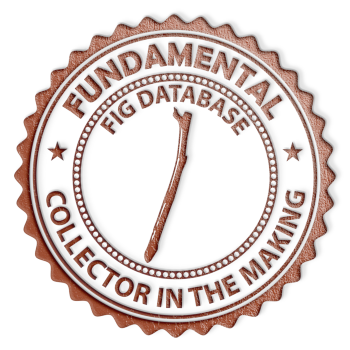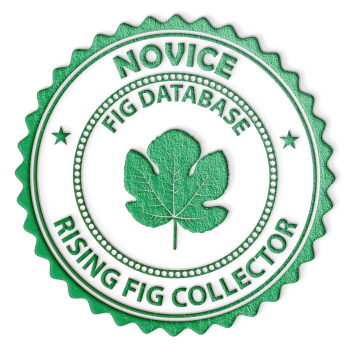- Joined
- Aug 31, 2021
- Messages
- 59
There is a product that many of us already use but haven’t a clue what it is and how it performs the miraculous feats for growers. It also has some possible health hazards if used improperly. What is it? Perlite is what it is called.
I like helping people learn and a recent post on another forum demonstrated a lack of knowledge of Perlite and made me wonder why people did not understand it. Perlite is like a bi-polar product, it provides aeration AND moisture. That starts the battle of understanding, how does one water a plant without wetting the soil? ‘splain dat Lucy!
That is a real PR problem because the explanation requires an understanding of what Perlite is and how it is unique in doing what it does. Most people don’t want to know how it works just what it does so you can skip the detailed geology/horticulture lesson and trust me that it does indeed do both. If you look at a bag of Perlite the seller does not even attempt to explain how it works. So I will give it a shot if you are interested.
So Perlite 101 begins.
I found several sites claiming Perlite is made from the mineral Pyrite AKA “fool’s gold” an iron Oxide and iron ore, not true but it keeps getting repeated from one blog to another, the two, Pyrite and Perlite are not even 3rd cousins! I also saw people claiming Perlite does not hold water and informing me how stupid I was to believe that, LOL! So that prompted this post to help educate those that are interested.
Perlite is a grey colored volcanic rock consisting mainly of silicone, think glass. It also contains a small amount of water, less than 10% trapped in the glass like bubbles. It was found that if Perlite is heated it “pops” like popcorn and greatly expands like 20 times its size and takes on the familiar white color. I can imagine native populations placing Perlite stones around a campfire to have them explode! As a Boy Scout we learned not to use stones from a creek on our campfires for the same reason, they could explode from water inside. When the glass gets heated to the plastic state about 1700F, just under melting, the water/steam explodes forming microscopic hollow cracked glass spheres and tubes inside. This is the way this rock can perform magic and provide moisture from the water that becomes trapped inside those glass bubbles and tubes when you wet Perlite. It can be processed so the spheres crack to hold water or not crack to be super light for processing into other products like insulations, filters or lightweight concrete and ceiling tiles.
When wet cracked Perlite can hold up to 4 times its weight in water but unlike say a sponge or peat moss it holds the water inside so your roots are not constantly wet when in contact with the Perlite. That moisture is released when the soil moisture goes down outside of the Perlite and the water inside is released as water vapor to the soil. This keeps the moisture levels at a good growing level for the roots but does not wet them with so much water the roots rot. In fact you can grow plants in Perlite alone, no soil needed if you provide fertilized water.
I use a mix of MG Garden soil 50%, Perlite 25%, fine pine bark 25% for potting and rooting with larger chunks of bark removed in the rooting cups. This provides me with a lightweight mix with many millions of glasses of water for thirsty roots without drowning them.
One caution working with Perlite, wear a mask if it is dry. Perlite is glass, silicon. If your lungs get it inside you can possibly develop Silicosis similar to Asbestosis. So use cautions like wet it before mixing it in soil or mask up. Studies say treat it as a nuisance dust below.
From Hessperlite.com
“Perlite has been the subject of numerous health studies conducted by scientific and governmental research organizations. Significantly, no test result or information indicates that Perlite poses any health risk. Indeed, the uniform result of all health studies points forcefully to the conclusion that Perlite and Perlite products are safe for consumer use.
“Worker health studies provide direct support for the conclusion that Perlite is a safe product. For example, studies by Cooper (1975; 1976), Cooper and Sargent (1986), and Weill (1990; 1994) indicate that Perlite poses no significant respiratory health risk to workers. As with all workplace dusts, Perlite can function as a nuisance dust, so exposure limits are set at those levels. For some workers, exposure can result in temporary physical irritation, discomfort, impaired visibility, and enhancement of accident potential. However, a health study (1994) of Perlite by Dr. Hans Weill of Tulane University concluded that workers exposed to Perlite are free of any measurable adverse respiratory effects.”
Pic 1 Mine
Pic 2 Ore
Pic 3 Process
Pic 4 Micro Spheres
Now you are now a horticulture Perlite expert, proud of you! Fig on!
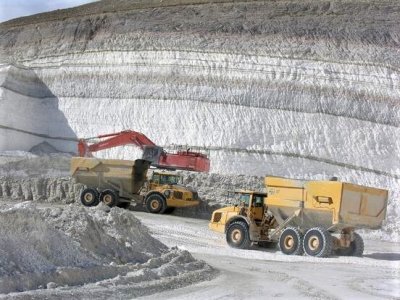
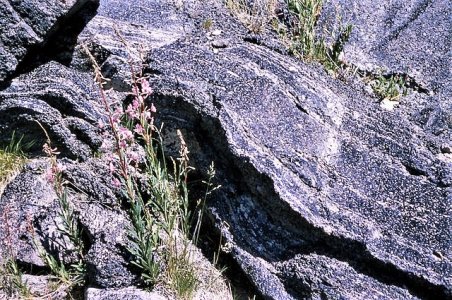

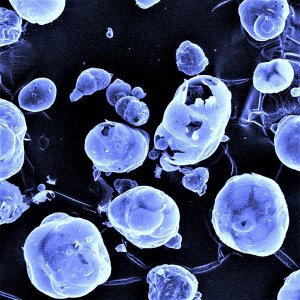
I like helping people learn and a recent post on another forum demonstrated a lack of knowledge of Perlite and made me wonder why people did not understand it. Perlite is like a bi-polar product, it provides aeration AND moisture. That starts the battle of understanding, how does one water a plant without wetting the soil? ‘splain dat Lucy!
That is a real PR problem because the explanation requires an understanding of what Perlite is and how it is unique in doing what it does. Most people don’t want to know how it works just what it does so you can skip the detailed geology/horticulture lesson and trust me that it does indeed do both. If you look at a bag of Perlite the seller does not even attempt to explain how it works. So I will give it a shot if you are interested.
So Perlite 101 begins.
I found several sites claiming Perlite is made from the mineral Pyrite AKA “fool’s gold” an iron Oxide and iron ore, not true but it keeps getting repeated from one blog to another, the two, Pyrite and Perlite are not even 3rd cousins! I also saw people claiming Perlite does not hold water and informing me how stupid I was to believe that, LOL! So that prompted this post to help educate those that are interested.
Perlite is a grey colored volcanic rock consisting mainly of silicone, think glass. It also contains a small amount of water, less than 10% trapped in the glass like bubbles. It was found that if Perlite is heated it “pops” like popcorn and greatly expands like 20 times its size and takes on the familiar white color. I can imagine native populations placing Perlite stones around a campfire to have them explode! As a Boy Scout we learned not to use stones from a creek on our campfires for the same reason, they could explode from water inside. When the glass gets heated to the plastic state about 1700F, just under melting, the water/steam explodes forming microscopic hollow cracked glass spheres and tubes inside. This is the way this rock can perform magic and provide moisture from the water that becomes trapped inside those glass bubbles and tubes when you wet Perlite. It can be processed so the spheres crack to hold water or not crack to be super light for processing into other products like insulations, filters or lightweight concrete and ceiling tiles.
When wet cracked Perlite can hold up to 4 times its weight in water but unlike say a sponge or peat moss it holds the water inside so your roots are not constantly wet when in contact with the Perlite. That moisture is released when the soil moisture goes down outside of the Perlite and the water inside is released as water vapor to the soil. This keeps the moisture levels at a good growing level for the roots but does not wet them with so much water the roots rot. In fact you can grow plants in Perlite alone, no soil needed if you provide fertilized water.
I use a mix of MG Garden soil 50%, Perlite 25%, fine pine bark 25% for potting and rooting with larger chunks of bark removed in the rooting cups. This provides me with a lightweight mix with many millions of glasses of water for thirsty roots without drowning them.
One caution working with Perlite, wear a mask if it is dry. Perlite is glass, silicon. If your lungs get it inside you can possibly develop Silicosis similar to Asbestosis. So use cautions like wet it before mixing it in soil or mask up. Studies say treat it as a nuisance dust below.
From Hessperlite.com
“Perlite has been the subject of numerous health studies conducted by scientific and governmental research organizations. Significantly, no test result or information indicates that Perlite poses any health risk. Indeed, the uniform result of all health studies points forcefully to the conclusion that Perlite and Perlite products are safe for consumer use.
“Worker health studies provide direct support for the conclusion that Perlite is a safe product. For example, studies by Cooper (1975; 1976), Cooper and Sargent (1986), and Weill (1990; 1994) indicate that Perlite poses no significant respiratory health risk to workers. As with all workplace dusts, Perlite can function as a nuisance dust, so exposure limits are set at those levels. For some workers, exposure can result in temporary physical irritation, discomfort, impaired visibility, and enhancement of accident potential. However, a health study (1994) of Perlite by Dr. Hans Weill of Tulane University concluded that workers exposed to Perlite are free of any measurable adverse respiratory effects.”
Pic 1 Mine
Pic 2 Ore
Pic 3 Process
Pic 4 Micro Spheres
Now you are now a horticulture Perlite expert, proud of you! Fig on!





